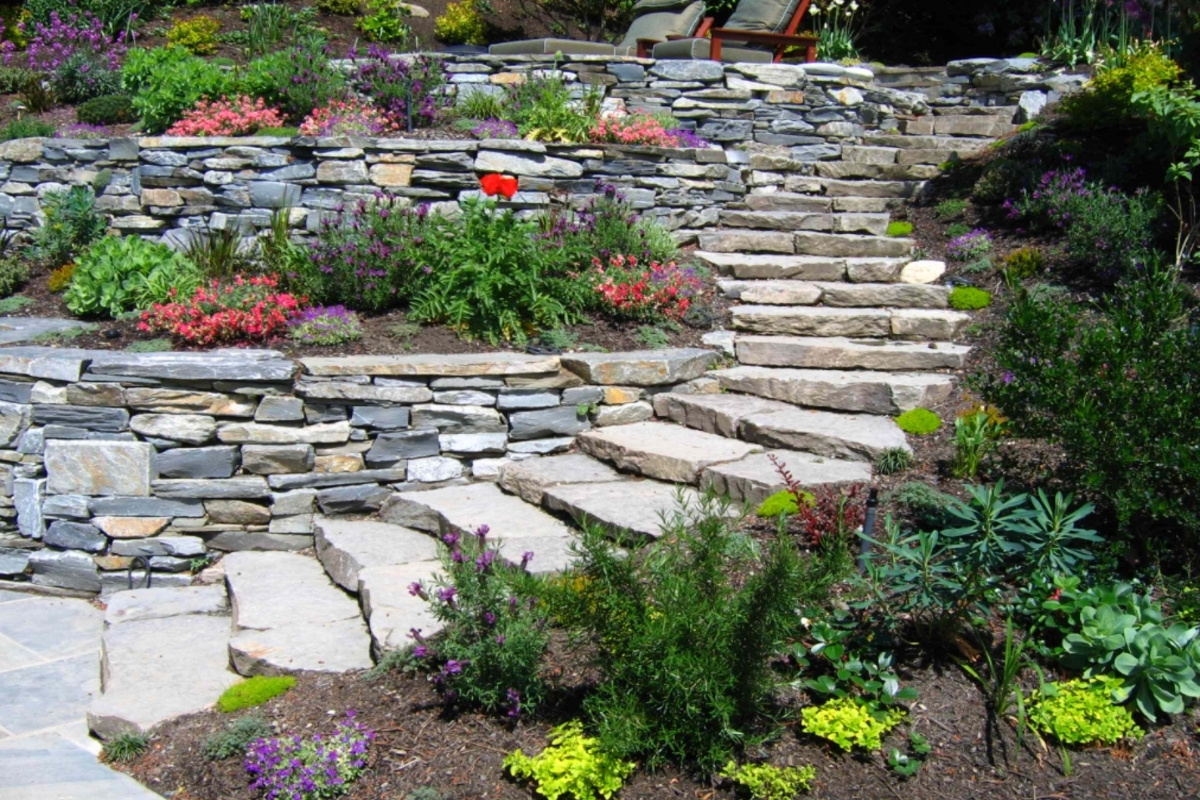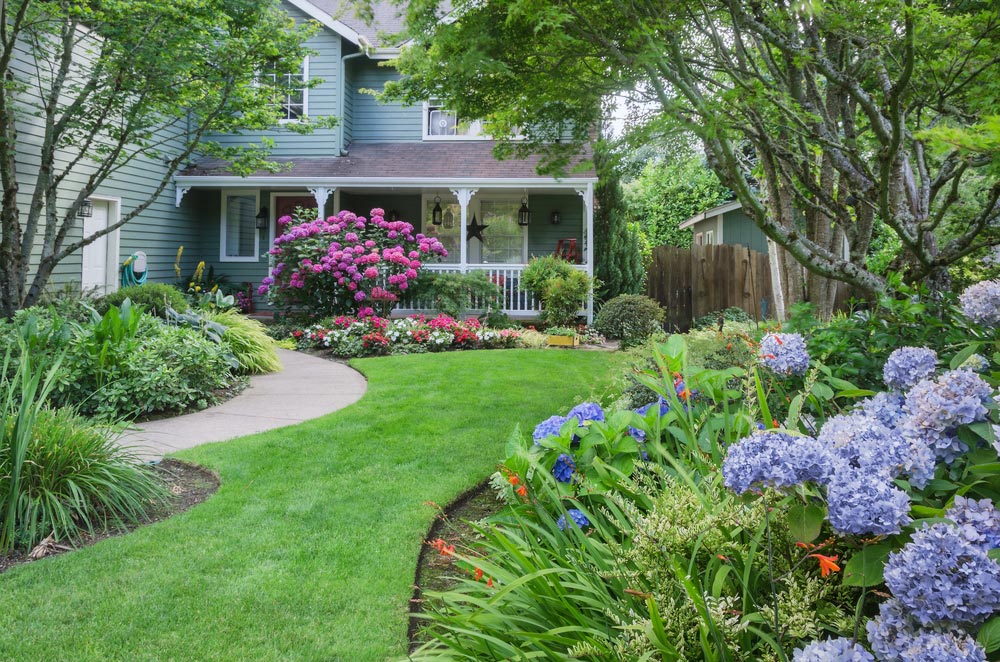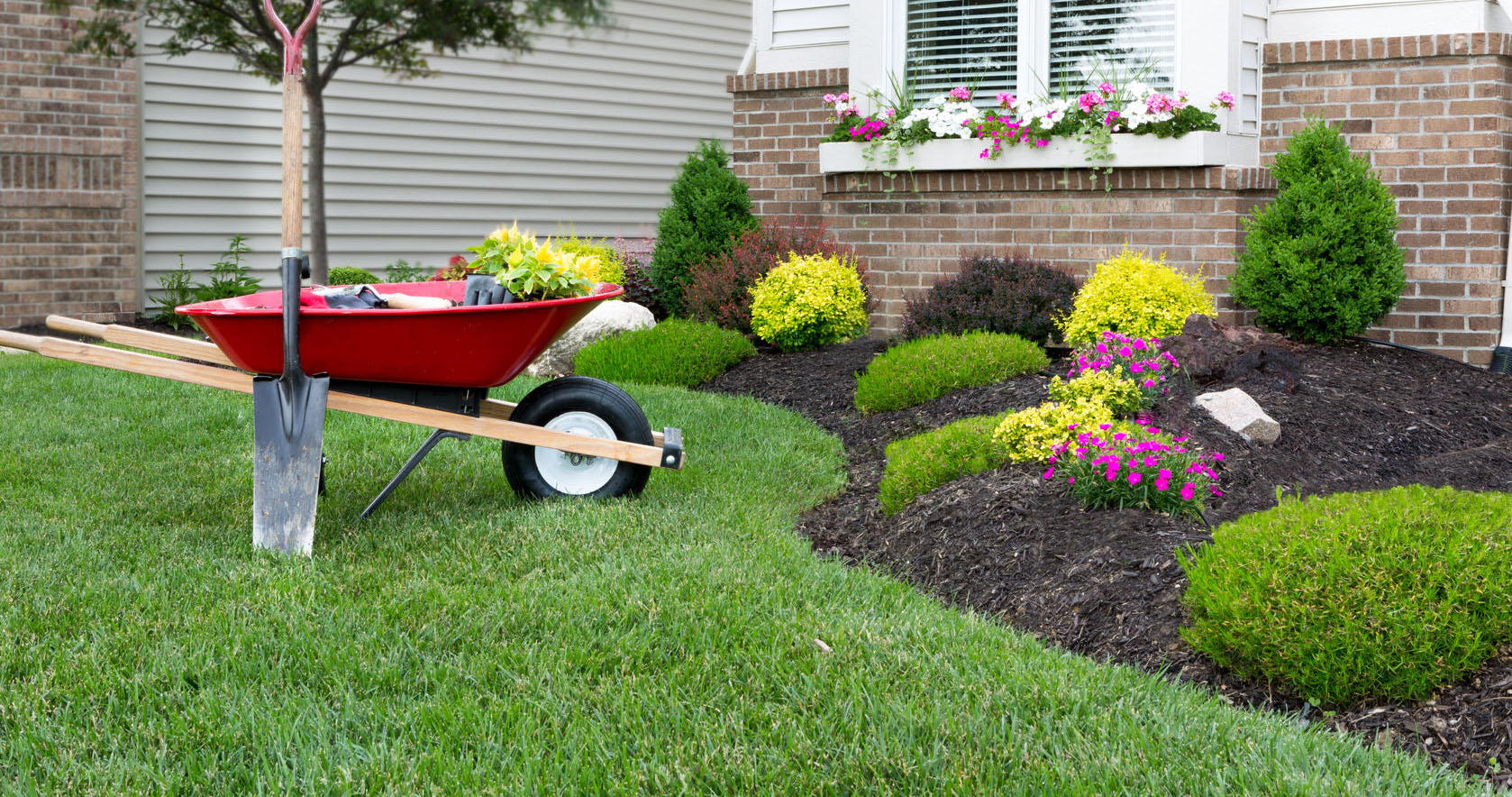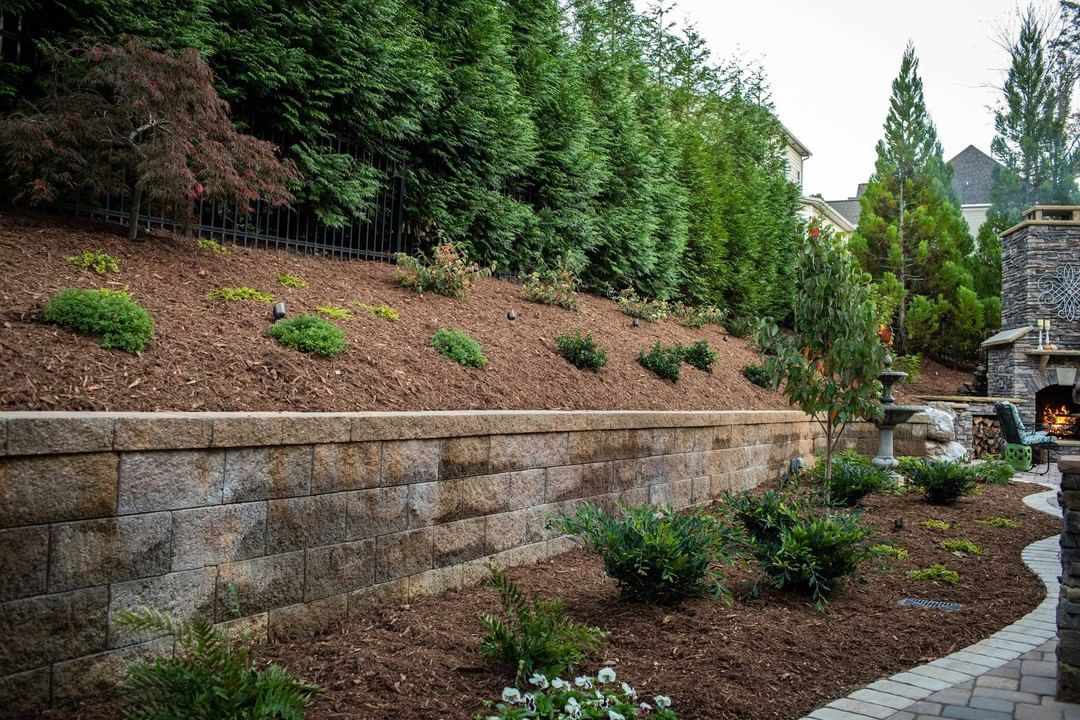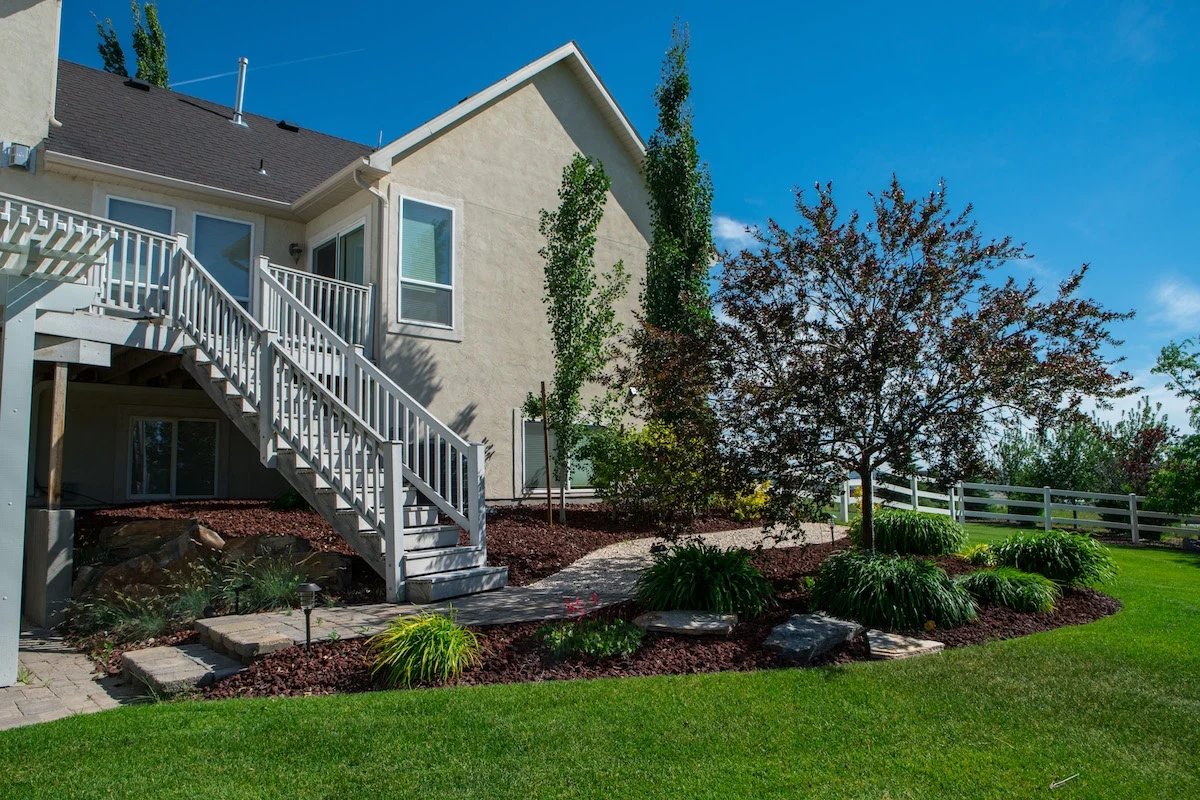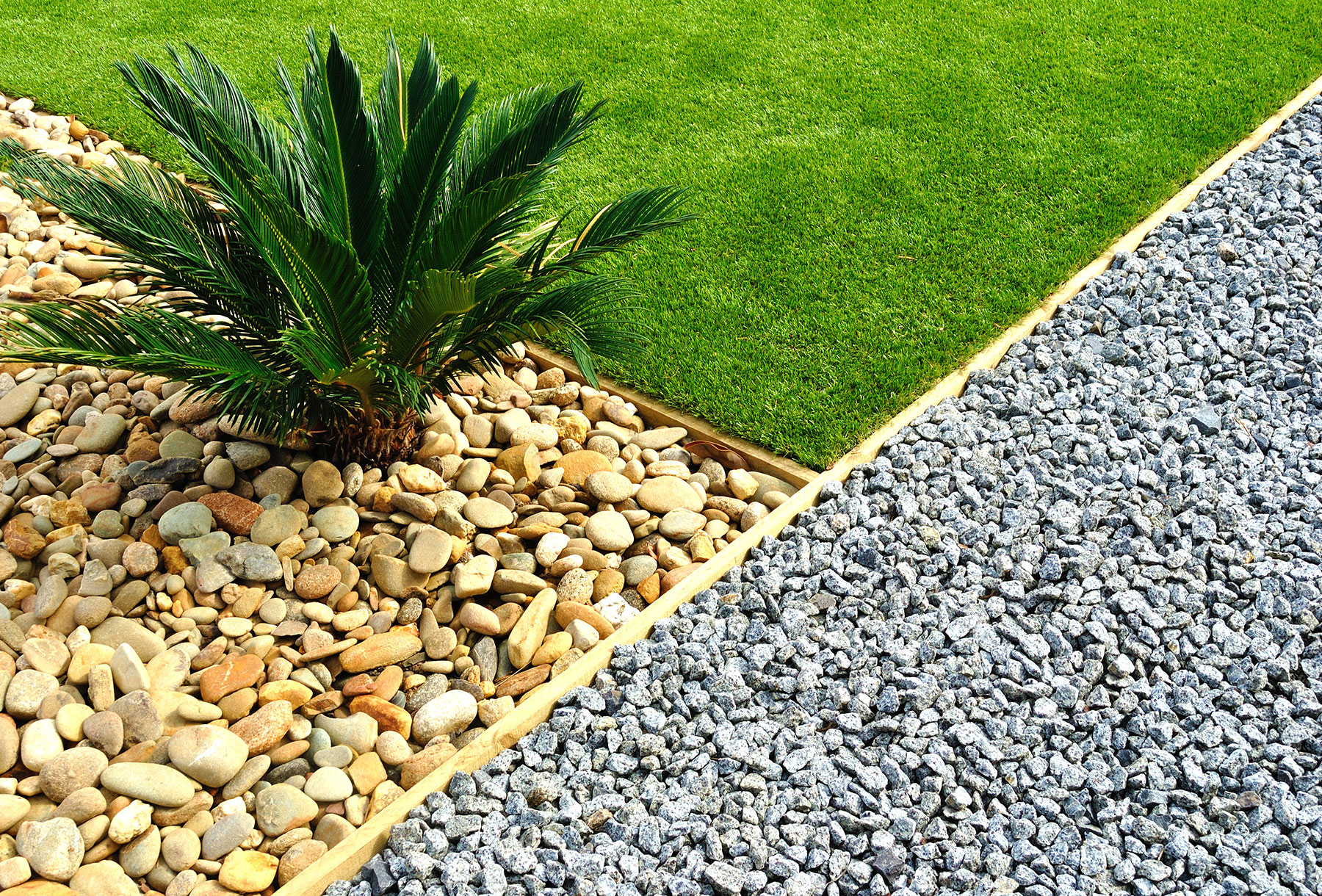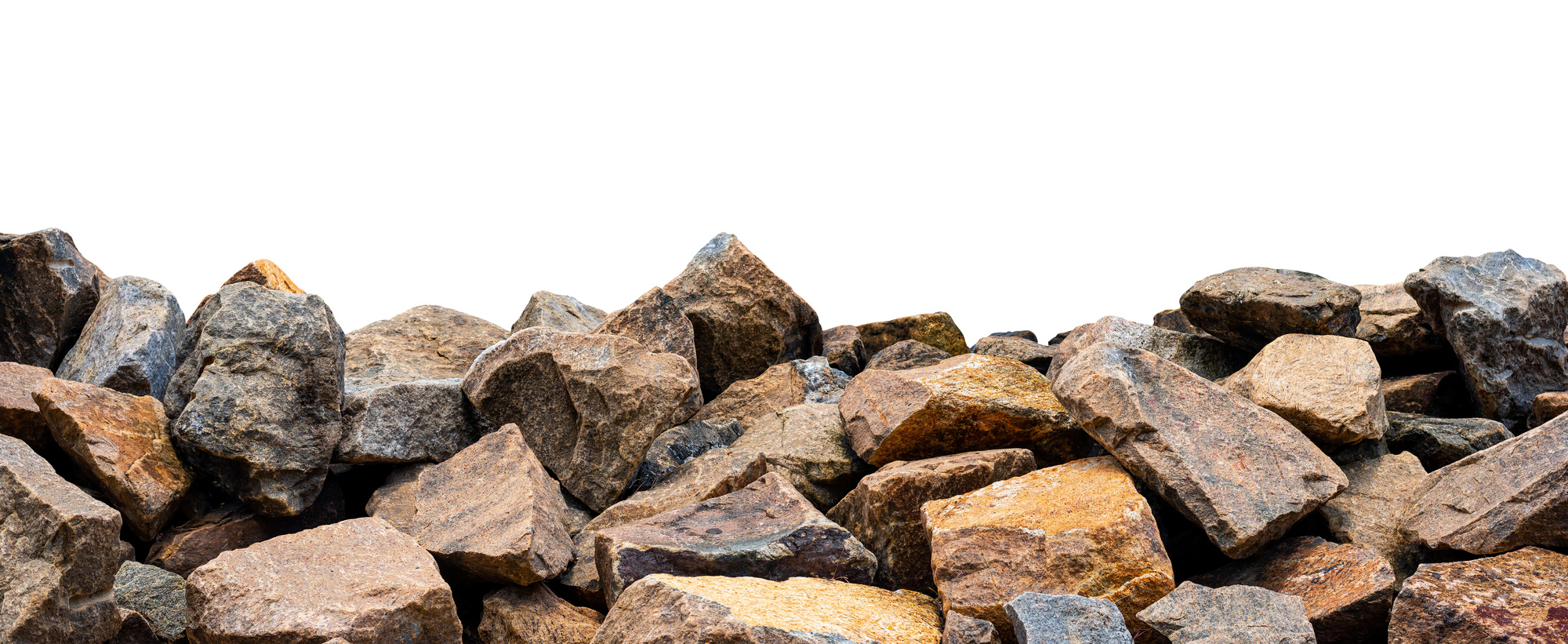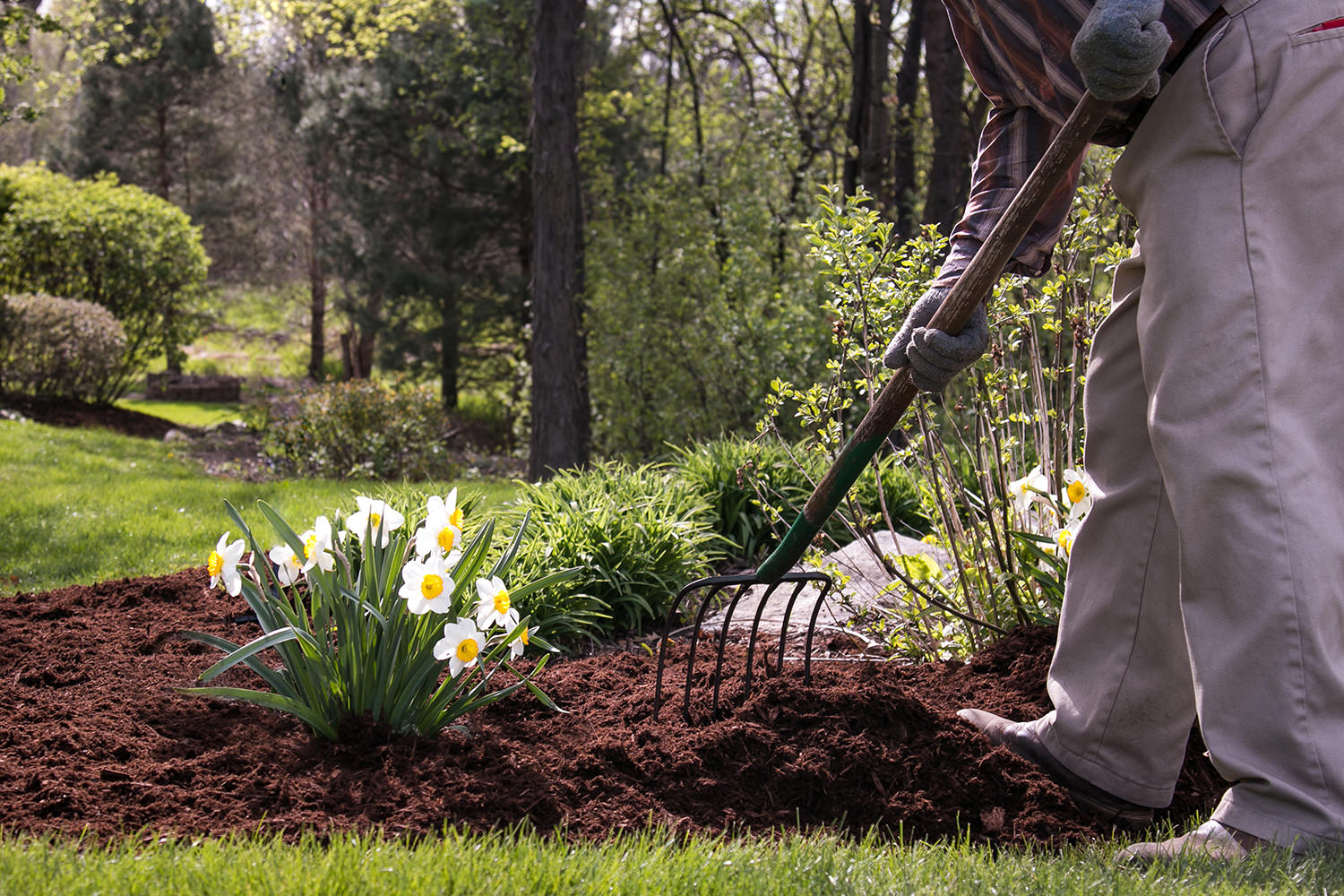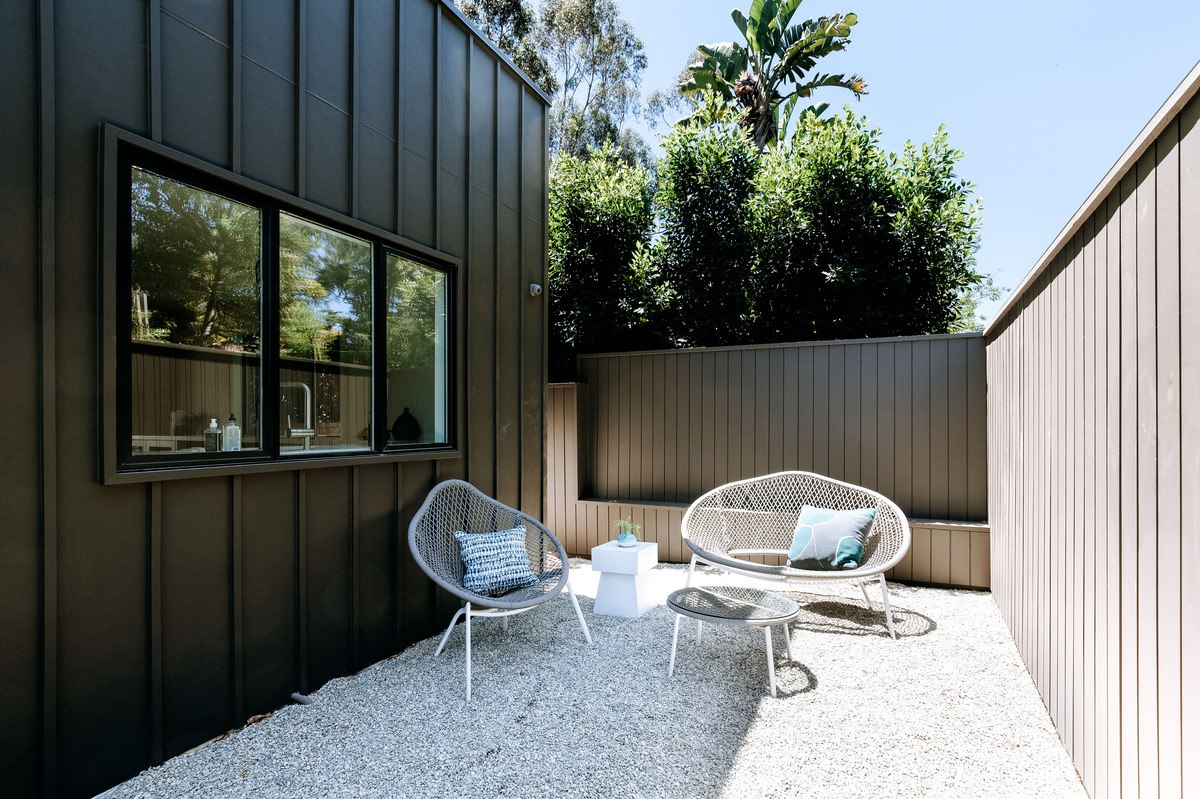Home>Garden Design>Landscape Design>What Is Grading In Landscaping


Landscape Design
What Is Grading In Landscaping
Modified: February 8, 2024
Learn about the importance of grading in landscaping and how it relates to landscape design. Enhance your outdoor space with proper land leveling and drainage.
(Many of the links in this article redirect to a specific reviewed product. Your purchase of these products through affiliate links helps to generate commission for Chicagolandgardening.com, at no extra cost. Learn more)
Table of Contents
Introduction
When it comes to creating a visually stunning and functional outdoor space, landscaping plays a vital role. One of the key elements in landscaping is grading, which is a process that involves shaping the land to create a level surface or to direct water flow. Grading is an essential step in landscape design that ensures proper drainage and provides a solid foundation for various landscaping features such as patios, walkways, and gardens.
Grading refers to the manipulation of the soil’s slope and contour, altering the natural shape of the land to meet the desired design objectives. It involves removing or adding soil to achieve the desired elevation and slope. The process requires careful planning and execution to ensure that the land is leveled correctly, preventing any issues with water pooling or erosion.
When done right, grading can transform an ordinary outdoor space into a visually appealing and functional landscape. By creating a well-graded surface, you can improve the efficiency of your irrigation system, enhance water drainage, and prevent water from pooling around your property. Grading also helps in optimizing the growth of plants, as it ensures adequate water infiltration and prevents waterlogged roots.
Moreover, proper grading helps in preventing erosion and runoff during heavy rainfall, protecting your property from potential damage. It also helps in creating a safer outdoor environment, as it reduces the risk of slips and falls caused by uneven surfaces.
Whether you are planning a new landscape design or revamping your existing outdoor space, grading should be a top consideration. By understanding the importance and techniques of grading, you can create a landscape that not only looks stunning but also functions effectively.
Definition of Grading
Grading in landscaping refers to the process of reshaping the land’s surface by altering its slope and contour. It involves manipulating the soil to create a level surface or to direct water flow according to the desired design objectives. The aim of grading is to create a stable and functional landscape that allows for proper drainage, optimal plant growth, and a visually appealing outdoor space.
During the grading process, the land is typically excavated or filled to achieve the desired elevation and slope. Excavation involves removing soil from higher areas to create a more even surface, while filling involves adding soil to lower areas to level the land. The amount and distribution of soil removal or addition depend on the specific design requirements and the natural characteristics of the terrain.
Grading is typically done using heavy machinery such as skid-steer loaders, bulldozers, and graders. These machines help in moving large amounts of soil quickly and efficiently to shape the land as desired. The process requires careful planning and precision to ensure that the final result is both aesthetically pleasing and functional.
There are different types of grading techniques used in landscaping, including rough grading and finish grading. Rough grading involves the initial shaping of the land to prepare it for more detailed work. This includes creating gentle slopes, removing large rocks or debris, and establishing the basic contours of the landscape. Finish grading, on the other hand, is the final step in the grading process, where the surface is fine-tuned to achieve the desired level of smoothness and precision.
Overall, grading plays a crucial role in landscaping by providing a solid foundation for various outdoor features and ensuring proper drainage. It allows for the creation of a functional and visually appealing outdoor space that can be enjoyed for years to come.
Importance of Grading in Landscaping
Grading is a fundamental aspect of landscaping that holds immense importance in creating a successful outdoor space. Proper grading not only enhances the visual appeal of the landscape but also ensures functionality and longevity. Here are some key reasons why grading is crucial in landscaping:
1. Proper Drainage: One of the primary reasons for grading is to ensure proper drainage of water. By creating slopes and contours in the land, grading helps to direct water away from the foundation, preventing waterlogging and potential damage to plants, structures, and hardscape features. Good drainage is vital for the health and longevity of the landscape, as excessive water can lead to erosion, soil compaction, and the growth of unwanted plants.
2. Erosion Control: Grading plays a significant role in preventing soil erosion. By establishing proper slopes and contouring the land, grading helps to control the flow of water during heavy rainfall and prevent soil erosion. This is crucial in preserving the integrity of the landscape and maintaining the stability of embankments, slopes, and overall land structure.
3. Optimal Plant Growth: Proper grading ensures that water is distributed evenly throughout the landscape, allowing plants to receive adequate moisture. By avoiding areas prone to water accumulation or poor drainage, grading helps to promote healthy plant growth and prevents the risk of root rot and other moisture-related issues. It also helps in optimizing the distribution of nutrients in the soil, contributing to the overall health and vitality of the plants.
4. Foundation Stability: Well-executed grading provides a solid foundation for various landscape features such as patios, walkways, and retaining walls. By creating a level surface, grading ensures that these structures are stable, minimizes the risk of shifting, and enhances their longevity. It also prevents potential damage to the foundation of buildings and other structures on the property.
5. Safety and Accessibility: Grading helps in creating a safe and accessible outdoor environment. By leveling the land and eliminating tripping hazards, grading reduces the risk of accidents and injuries. It also facilitates easy movement and accessibility for individuals with mobility challenges, ensuring that the landscape is inclusive for everyone.
Overall, grading plays a pivotal role in shaping a functional and visually pleasing landscape. It not only enhances the aesthetic appeal but also ensures proper drainage, prevents erosion, promotes optimal plant growth, and provides a stable foundation for various landscape elements. By prioritizing proper grading in landscaping projects, you can create an outdoor space that is beautiful, functional, and sustainable for years to come.
Factors Influencing Grading in Landscaping
Grading in landscaping is a process that requires careful consideration of various factors to achieve the desired results. The following are some key factors that influence the grading of a landscape:
1. Topography: The natural slope and contours of the land play a significant role in determining the grading requirements. Steep slopes may require more extensive grading and contouring to create a level surface, while gentle slopes may only need minor adjustments. The existing topography of the site sets the foundation for the grading process and influences the overall design and functionality of the landscape.
2. Drainage Needs: The drainage needs of the landscape are crucial in determining the grading strategy. It is important to consider how water flows across the property, identify areas prone to water accumulation or erosion, and plan the grading accordingly to facilitate proper water drainage. By creating slopes and contours, grading helps to direct water away from buildings, plants, and other vulnerable areas.
3. Landscape Design Objectives: The desired design objectives of the landscape also influence the grading process. Whether you aim for a flat, expansive lawn, or prefer a multi-level garden with terraces, the grading needs to align with your design vision. Grading helps in creating the desired aesthetic and functional elements of the landscape, such as raised beds, retaining walls, or sunken seating areas.
4. Soil Conditions: The soil composition and quality on the site impact the grading process. Different soil types have varied drainage capabilities, stability, and compaction rates. It is essential to assess the soil conditions before grading to determine if any soil amendments or stabilization methods are required to ensure optimal grading results. Soil testing helps to identify potential challenges and guide the grading process accordingly.
5. Environmental Considerations: Factors such as local regulations, environmental conservation, and adjacent ecosystems need to be taken into account during grading. It is crucial to comply with any regulations regarding land disturbance, water runoff, and preservation of natural features. Proper grading techniques can help minimize the impact on the environment and protect the surrounding ecosystem.
6. Accessibility and Safety: Grading should also consider accessibility and safety aspects. Slopes and pathways need to be designed in a way that ensures safe and easy movement within the landscape. Proper drainage and a level surface help prevent water pooling and reduce the risk of slips and falls, making the landscape more accessible and safe for users of all abilities.
By taking these factors into consideration, landscape designers and contractors can plan and execute a grading strategy that meets the specific needs of the site, enhances the aesthetics, and ensures functional integrity. Careful assessment of these factors ensures that grading creates a balanced, visually appealing, and sustainable landscape.
Methods and Techniques of Grading in Landscaping
Grading in landscaping involves several methods and techniques that are employed to reshape the land and achieve the desired design objectives. These methods ensure proper drainage, optimal soil stabilization, and the creation of a level surface. Here are some commonly used techniques in grading:
1. Cut and Fill: Cut and fill is a common grading technique used to create a level surface in uneven terrain. It involves cutting into higher areas of the land and using the excavated soil to fill in lower areas, effectively redistributing the soil to achieve the desired slope and contour. This technique is particularly useful in creating a stable foundation for features like patios, driveways, and garden beds.
2. Leveling: Leveling is a straightforward technique that involves removing high spots and filling in low spots to create a smooth and even surface. It is commonly used for small-scale projects, such as leveling a yard or preparing a site for a garden bed. Leveling helps in eliminating bumps and uneven areas, improving accessibility, and providing a clean canvas for subsequent landscaping activities.
3. Terracing: Terracing is a grading technique used in sloped landscapes to create multiple level surfaces or terraces. It involves cutting into the slope at different elevations and constructing retaining walls to hold back the soil and stabilize the terraces. Terracing not only adds visual interest to the landscape but also helps control erosion by reducing the slope gradient and providing flat areas for planting or other activities.
4. Backfilling and Compaction: Backfilling is the process of filling excavated areas with soil or other suitable materials. After cutting or excavating the land, the empty spaces are filled to create a level surface. It is crucial to properly compact the backfilled soil to ensure stability and prevent settling. Compaction is achieved using heavy machinery or hand-operated compactors to compress the soil and remove air gaps, making it more stable and less prone to erosion.
5. Grading by Design: Grading by design involves following a specific plan or blueprint for the grading process. This method ensures accuracy and precision in shaping the land, creating the desired slopes, contours, and drainage patterns. Grading by design is commonly used for larger landscaping projects or when intricate grading patterns are required.
6. Soil Amendment and Erosion Control: As a part of the grading process, soil amendment and erosion control measures are often implemented. Soil amendments may include adding organic matter, compost, or fertilizers to improve the soil’s fertility and structure. Erosion control methods such as installing erosion control blankets, retaining walls, or planting groundcover plants help stabilize the soil and prevent erosion during and after the grading process.
These grading techniques are employed based on the specific requirements and conditions of the landscape. By using the appropriate methods and techniques, professionals can create a well-graded landscape that not only looks visually appealing but also enhances functionality and promotes long-term sustainability.
Equipment and Tools Used in Grading
Grading in landscaping requires the use of specialized equipment and tools to efficiently manipulate the land and achieve the desired slopes, contours, and drainage patterns. The following are some common types of equipment and tools used in grading:
1. Excavator: Excavators are heavy construction machines equipped with a bucket or a blade that is used for digging, moving, and leveling soil. They are ideal for large-scale grading projects that involve significant earthmoving and excavation. Excavators provide the power and versatility needed to cut into higher areas, remove soil, and shape the land appropriately.
2. Skid-Steer Loader: Skid-steer loaders are compact machines equipped with a bucket or attachments that can be used to push, dig, or grade soil. They are highly maneuverable and are commonly used for smaller-scale grading projects. Skid-steer loaders are ideal for precise grading tasks, as their compact size allows them to access tight spaces and make sharp turns.
3. Bulldozer: Bulldozers are robust machines that feature a large blade at the front for pushing and leveling soil. They are commonly used in grading projects that involve extensive earthmoving and reshaping of the land. Bulldozers are capable of moving large amounts of soil, creating long, straight slopes, and establishing a solid foundation for various landscape features.
4. Grader: Graders, also known as motor graders, are specially designed machines with a long blade that is used to create smooth and accurate slopes. The blade can be adjusted to achieve specific angles and slopes, making graders perfect for fine grading and precision work. Graders are commonly used in road construction and large-scale grading projects where precise grading is crucial.
5. Laser Level: Laser levels are devices that use laser beams to measure and maintain a specific elevation or slope. They are essential tools in grading projects as they help ensure accurate and consistent grading results. Laser levels emit a laser beam that is projected across the land, and the receiver captures the laser to determine the level of the land surface. This helps operators maintain the desired slope and contour during the grading process.
6. Hand Tools: Hand tools play an important role in grading, especially for smaller-scale projects or tasks that require more detailed work. Shovels, rakes, tamper tools, and leveling tools are commonly used to manipulate, spread, and smooth soil during grading. These tools allow for more precise adjustments and finer control over the grading process.
When undertaking a grading project, it is crucial to have the appropriate equipment and tools for the job. The choice of equipment and tools will depend on the scale of the project, the complexity of the grading requirements, and the accessibility of the site. By using the right equipment and tools, professionals can effectively and efficiently shape the land, achieving the desired grading outcomes while minimizing errors and inconsistencies.
Common Issues and Challenges in Grading
Grading in landscaping can present various challenges that need to be addressed to ensure successful outcomes. When undertaking a grading project, it is important to be aware of these common issues and challenges that may arise:
1. Poor Drainage: Inadequate or improper drainage is a common issue in grading. If the land is not properly shaped to facilitate water flow away from structures or low-lying areas, it can result in water pooling, erosion, and damage to the landscape. It is essential to consider the natural water flow patterns of the site and plan the grading accordingly to ensure proper drainage and avoid potential water-related problems.
2. Erosion and Sediment Control: Grading can disturb the soil, making it more susceptible to erosion. The removal of existing vegetation and the alteration of slope contours can lead to increased runoff and sedimentation. Implementing erosion control measures such as retaining walls, erosion control blankets, and proper vegetation cover can help minimize erosion and sedimentation during and after the grading process.
3. Soil Compaction: Grading often involves heavy machinery, which can lead to soil compaction if not managed properly. Compacted soil can impede root growth and affect water absorption, potentially impacting the health of plants. It is crucial to avoid excessive compaction and consider measures such as soil aeration or the addition of organic matter to counteract compaction and promote healthy soil conditions.
4. Site Accessibility: Some grading projects may present access challenges due to limited space or obstructions. For instance, grading around existing trees, structures, or utility lines may require special consideration to prevent damage. In such cases, it is essential to plan the grading carefully and use appropriate equipment or hand tools to ensure precise and safe execution.
5. Unforeseen Site Conditions: Once the grading process begins, unknown obstacles or issues may arise that were not identified during the assessment phase. This could include hidden rocks, poor soil conditions, or utility lines that were not previously detected. Dealing with these unforeseen challenges may require adjustments to the grading plan, necessitating additional time, resources, and expertise.
6. Compliance with Regulations: Grading projects are often subject to local regulations and permits. Failure to comply with these regulations can result in potential fines and delays. It is important to be aware of and adhere to any requirements regarding land disturbance, erosion control, or protection of existing natural features to ensure a smooth and legally compliant grading process.
By being proactive and addressing these common issues and challenges, landscape professionals can minimize potential problems during the grading process. Thorough planning, careful execution, and proper management can help overcome these challenges, leading to a successful grading project that meets the desired design objectives and ensures the long-term stability of the landscape.
Benefits of Proper Grading in Landscaping
Proper grading is a crucial element in landscaping that offers numerous benefits to both the functionality and aesthetics of outdoor spaces. From improved drainage to enhanced visual appeal, here are some of the key benefits of proper grading:
1. Effective Water Drainage: Proper grading ensures efficient water drainage by directing water away from buildings, plantings, and other vulnerable areas. By creating slopes and contouring the land appropriately, grading prevents water pooling, which can lead to soil erosion, plant disease, and structural damage. Effective water drainage also helps maintain a healthy and vibrant landscape by preventing oversaturation and root rot.
2. Erosion Control: Grading helps control soil erosion by establishing proper slopes and contouring. By preventing excess runoff and directing water flow, graded landscapes are less susceptible to erosion caused by heavy rainfall or landscaping activities. This protection against erosion helps preserve the integrity of soil structure and prevents the loss of valuable topsoil, which is essential for healthy plant growth.
3. Enhanced Landscape Aesthetics: Proper grading contributes to the overall visual appeal of a landscape. By creating a level surface and harmonious contours, graded landscapes appear more polished and well-maintained. The evenness of the terrain provides a solid foundation for showcasing landscape features such as walkways, plant beds, and outdoor living areas. A well-graded landscape not only looks pleasing to the eye but also enhances the functionality and enjoyment of the outdoor space.
4. Soil Health and Plant Growth: Proper grading promotes healthier soil conditions, contributing to optimal plant growth. Well-drained soil prevents water stagnation and promotes proper oxygenation of the root system. This facilitates nutrient absorption and promotes robust plant growth. Additionally, an even surface created by grading prevents the pooling of water around plants, reducing the risk of disease and root rot.
5. Improved Safety: Proper grading helps in creating a safer outdoor environment by eliminating uneven surfaces and potential tripping hazards. Leveling the land and ensuring proper water drainage reduces the risk of slips, falls, and accidents, making the landscape more accessible to users of all ages and abilities. By addressing potential safety hazards through grading, outdoor spaces become more enjoyable and user-friendly for gatherings and recreational activities.
6. Preserves Property Value: A well-graded landscape contributes to the overall value of a property. Proper drainage and water management help protect the structural integrity of buildings and hardscape features, minimizing the risk of costly damage. The visual appeal and functionality of a well-graded landscape can also significantly enhance curb appeal, making the property more attractive in the real estate market.
Proper grading is essential for creating a landscape that is not only visually appealing but also functional and sustainable. By addressing issues such as water drainage, erosion control, and soil health, graded landscapes ensure the longevity of plants and structures while enhancing the overall beauty of the outdoor space.
Conclusion
Grading is a foundational aspect of landscaping that plays a crucial role in creating a visually stunning, functional, and sustainable outdoor space. By manipulating the slope and contour of the land, grading ensures proper drainage, prevents erosion, and provides a level surface for various landscape features. It contributes to the overall health and vitality of the landscape by promoting optimal soil conditions and supporting the growth of plants. Moreover, proper grading enhances the safety and accessibility of the outdoor environment, reducing the risk of accidents and creating a welcoming space for all users.
Through various methods and techniques, including cut and fill, leveling, and terracing, professionals can reshape the land according to the desired design objectives. The use of advanced equipment and tools, such as excavators, skid-steer loaders, and laser levels, ensures accuracy and efficiency in the grading process. Addressing common issues and challenges, such as poor drainage, erosion control, and unforeseen site conditions, is crucial to achieving successful grading outcomes.
The benefits of proper grading in landscaping are manifold. Effective drainage prevents water damage to structures and plants, while erosion control helps preserve the integrity of the soil. Aesthetically, proper grading enhances the visual appeal and value of the landscape. Moreover, it promotes healthier soil conditions, optimal plant growth, and a safer outdoor environment for all users.
Whether you are planning a new landscape design or revamping your existing outdoor space, it is important to prioritize proper grading. By understanding the importance, techniques, and equipment used in grading, you can create an outdoor space that is not only visually stunning but also functional, sustainable, and enjoyable for years to come.
